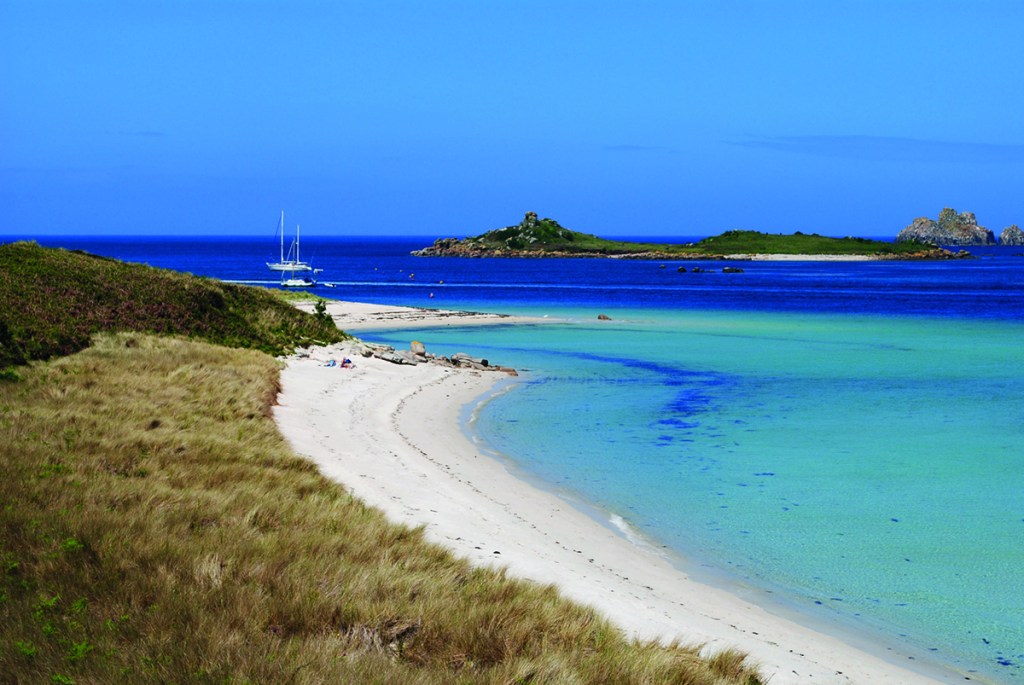‘You can get away from everything,’ said Harold Wilson of the Isles of Scilly, ‘not only in distance but also in time’. During the parliamentary recess, Wilson would frequently catch the sleeper from Paddington to Penzance before making the notoriously choppy crossing to Britain’s most westerly archipelago. There he would unwind in his cottage on St Mary’s.
This family of five islands 28 miles off the nose of Land’s End has always enjoyed a somewhat secretive coterie of admirers — Jude Law and Michael Morpurgo to name but two. Deserted beaches with a Caribbean palette are surely part of the draw, as are hedgerows festooned with wild garlic, pink bells and exotic aeoniums. The near subtropical climate is a botanist’s paradise: there is nowhere warmer or more fertile on the British Isles.
No wonder, then, that the islanders are fiercely protective of St Mary’s and the so-called ‘off-islands’ that surround it. An islander is considered a Scillonian only if their grandparents were born and raised here.
Scillonians forged their strong seafaring heritage in the perilous Atlantic waters beyond the archipelago’s northern rocks. As soon as they caught sight of a ship on the horizon, the islanders would race out to it in boats called gigs in order to earn the chance to pilot it to safety. The stakes were high. A hefty fee would be paid to the crew who reached the ship first — often enough to feed their families for a year.
Many a ship has been caught off-guard by these unpredictable seas. More than 1,300 men were lost in 1707 in one of the worst disasters in British maritime history when a Royal Navy fleet misjudged its route into the English Channel from Gibraltar and met its end on the edge of St Agnes.
Hidden inside a little church by a secluded beach on St Agnes is a stained-glass window by a Scillonian artist, Oriel Hicks, depicting two Scillonian gigs coming to the aid of a sinking ship. Amid the swirling seas are the words of Isaiah 43: ‘When you pass through the waters, I will be with you.’
Six lighthouses keep watch over the seas around the islands. Most were built in the 1800s by a family of distinguished engineers called the Douglasses. It was grim but rewarding work: during spells of bad weather they were said to have lived off puffins and limpets. That the lighthouses still stand tall today makes them a marvel of Victorian architecture.
At low tide a handful of times a month, the sand flats are exposed between Tresco and Bryher and visitors and islanders alike walk on foot from one island to the other. Whatever the tide, one still feels remarkably cut off: no newspapers arrive on any of the off-islands until well into the afternoon. For Harold Wilson, this was clearly a selling point. Those who wish to own a slice of British political history (or who simply wish to escape its current, painful episode) can purchase Wilson’s gray, blockish bungalow for themselves: it is on the market for a little less than the average London property price. Don’t expect frills, however. As one islander quipped, ‘the view is the best thing about it’.
This article was originally published in The Spectator’s August 2021 World edition.


















